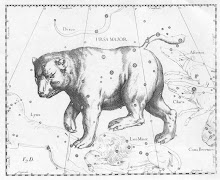If you ever hear people talk about football teams during draft time (and since the NFL Combine is held in Indianapolis, it's hard to get away from that), there's always a discussion of "draft to position" (pick the best one available within a previously defined area) and "best available athlete" (select an outstanding talent, even if you don't need someone in that area). NASA's Education Outcomes and funding limitations mean that we sometimes draft to position more than I'd like--I remember one year when almost all of our graduate fellowship applicants were so outstanding, I thought I'd gotten confused with the faculty applicants. We can't just fund PhD students, or astronomers, or people from a specific campus. There's got to be variety and range across the various emphases of higher education, K-12 education, and informal education.
However, you should also see some important common threads in these awards. Without question, our most significant commitment in terms of numbers is to undergraduate students. (That's good--Space Grant is a Higher Education program, after all.) Our initial scholarship awards to over 20 undergraduates are supplemented by the following projects which highlight undergraduate research:
- Bandla, Purdue WL: Reduced Gravity Student Flight Opportunity
- Edwards, Indiana U: Summer Scholars Institute
- Hrivnak / Kaitchuk, Ball State / VU: Undergraduate Astronomy Research
- MATE Team, Purdue WL: Undersea ROV Competition
- Rengstorf, Purdue Cal: Undergraduate Research Grants Program
- Sevener, Valparaiso: Undergrad Research in High Temperature Materials
- Story, Purdue WL: Purdue Research Opportunities
- Takehara, Taylor: TU Wind Turbines Model Testing
The following projects, while addressing faculty research interests, also have significant undergraduate components:
- Dick, Valparaiso: Genetic components of circadian rhythms
- Ericson, IPFW: Metabolomics to improve health for long duration space flight
- Watters, Valparaiso: Filamentous fungi to convert waste into protein
I am also very pleased to see a continually increasing quality of K-12 projects, addressing both student experiences and teacher professional development activities. The First Round awards for 2011-12 in these areas include:
- Abramowitz, Purdue Cal: Materials Camp for Teachers
- Groh, Purdue WL: Innovation to Reality (I2R) Afterschool STEM projects for Middle School
- Perry, IUPUI: Nanotechnology Summer Teacher Fellows Program
The following projects have combinations of research, undergraduate education, and K-12 outreach components that are somewhat like, and yet differently contributing to, other items in our portfolio.
- Barrington / Slavin, Ball State / Purdue Cal: Study of interacting spherical stellar systems
- Harvey, State Museum: Omniglobe software and content upgrades
Not bad, for a start.





No comments:
Post a Comment